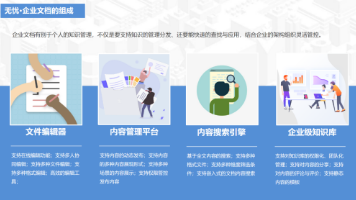公路落石泥石流识别监控摄像机
公路落石泥石流识别监控摄像机基于YOLOv12和Transformer架构深度学习算法,公路落石泥石流识别监控摄像机通过集成AI大模型,对桥梁塌陷、边坡落石、泥石流滑坡识别智能分析其风险,能够实现 24 小时不间断的实时监测,随时掌握山体的动态变化,及时发现潜在危险。一旦系统识别到危险迹象,便会立即触发报警机制。基于先进的深度学习技术,识别准确率高,大大减少了误报和漏报的可能性,为决策提供可靠依据
公路落石泥石流识别监控摄像机基于YOLOv12和Transformer架构深度学习算法,公路落石泥石流识别监控摄像机通过集成AI大模型,对桥梁塌陷、边坡落石、泥石流滑坡识别智能分析其风险,能够实现 24 小时不间断的实时监测,随时掌握山体的动态变化,及时发现潜在危险。一旦系统识别到危险迹象,便会立即触发报警机制。基于先进的深度学习技术,识别准确率高,大大减少了误报和漏报的可能性,为决策提供可靠依据。
YOLOv12的主要创新在于成功地将注意力机制与YOLO架构结合(论文的创新点,其实这也是绝大多数改进的作者在做的事情,大家都可以这么写),克服了传统注意力机制在实时性和计算效率方面的不足(原文中写的是速度类似,实际测试要慢一些相对于之前的系列)。引入区域注意力模块(A2,后面我会详细分析)和残差高效层聚合网络(R-ELAN,我理解的就是yolov11的主干结构),其实YOLOv12引入注意力机制肯定会造成一定的不稳定性,可能会导致在某些数据据效果很好有些数据集效果很差,但这给改进的作者留下了很多的改进空间,其次YOLOv12去除了SPPF,因为其和注意力机制的作用有些类似起到加速训练的作用。

近年来,随着全球气候变化加剧,极端天气事件频发,山体滑坡、落石等地质灾害对人民生命财产安全构成严重威胁。特别是在山区公路、隧道口、铁路沿线以及矿区、旅游景区等场所,这类灾害的发生往往具有突发性和不可预测性,给防灾减灾工作带来巨大挑战。针对这一问题,山体滑坡落石监测识别报警系统应运而生,为地质灾害防治提供了智能化解决方案。
# 检测类
class Detect(nn.Module):
stride = None # strides computed during build
export = False # onnx export
def __init__(self, nc=80, anchors=(), ch=()): # detection layer
super(Detect, self).__init__()
self.nc = nc # number of classes
self.no = nc + 5 # number of outputs per anchor
self.nl = len(anchors) # number of detection layers
self.na = len(anchors[0]) // 2 # number of anchors
self.grid = [torch.zeros(1)] * self.nl # init grid
a = torch.tensor(anchors).float().view(self.nl, -1, 2)
self.register_buffer('anchors', a) # shape(nl,na,2)
self.register_buffer('anchor_grid', a.clone().view(self.nl, 1, -1, 1, 1, 2)) # shape(nl,1,na,1,1,2)
self.m = nn.ModuleList(nn.Conv2d(x, self.no * self.na, 1) for x in ch) # output conv
def forward(self, x):
# x = x.copy() # for profiling
z = [] # inference output
self.training |= self.export
for i in range(self.nl):
x[i] = self.m[i](x[i]) # conv
bs, _, ny, nx = x[i].shape # x(bs,255,20,20) to x(bs,3,20,20,85)
x[i] = x[i].view(bs, self.na, self.no, ny, nx).permute(0, 1, 3, 4, 2).contiguous()
if not self.training: # inference
if self.grid[i].shape[2:4] != x[i].shape[2:4]:
self.grid[i] = self._make_grid(nx, ny).to(x[i].device)
y = x[i].sigmoid()
y[..., 0:2] = (y[..., 0:2] * 2. - 0.5 + self.grid[i].to(x[i].device)) * self.stride[i] # xy
y[..., 2:4] = (y[..., 2:4] * 2) ** 2 * self.anchor_grid[i] # wh
z.append(y.view(bs, -1, self.no))
return x if self.training else (torch.cat(z, 1), x)
@staticmethod
def _make_grid(nx=20, ny=20):
yv, xv = torch.meshgrid([torch.arange(ny), torch.arange(nx)])
return torch.stack((xv, yv), 2).view((1, 1, ny, nx, 2)).float()
# 根据配置的.yaml文件搭建模型
class Model(nn.Module):
def __init__(self, cfg='yolov5s.yaml', ch=3, nc=None): # model, input channels, number of classes
super(Model, self).__init__()
if isinstance(cfg, dict):
self.yaml = cfg # model dict
else: # is *.yaml
import yaml # for torch hub
self.yaml_file = Path(cfg).name
with open(cfg) as f:
self.yaml = yaml.load(f, Loader=yaml.SafeLoader) # model dict
# Define model
ch = self.yaml['ch'] = self.yaml.get('ch', ch) # input channels
if nc and nc != self.yaml['nc']:
logger.info('Overriding model.yaml nc=%g with nc=%g' % (self.yaml['nc'], nc))
self.yaml['nc'] = nc # override yaml value
self.model, self.save = parse_model(deepcopy(self.yaml), ch=[ch]) # model, savelist
self.names = [str(i) for i in range(self.yaml['nc'])] # default names
# print([x.shape for x in self.forward(torch.zeros(1, ch, 64, 64))])
# Build strides, anchors
m = self.model[-1] # Detect()
if isinstance(m, Detect):
s = 256 # 2x min stride
m.stride = torch.tensor([s / x.shape[-2] for x in self.forward(torch.zeros(1, ch, s, s))]) # forward
m.anchors /= m.stride.view(-1, 1, 1)
check_anchor_order(m)
self.stride = m.stride
self._initialize_biases() # only run once
# print('Strides: %s' % m.stride.tolist())
在国道高速公路的桥梁、隧道口、深挖路堑等易发生落石的关键位置安装摄像头,进行24小时不间断视频监控。一旦检测到落石或山体裂缝扩展,立即触发预警。当摄像头检测到落石等高风险迹象时,系统会自动向相关部门和居民发送预警信号,提醒疏散和避险。同时,可联动现场广播、情报板等设备发布告警信息,确保过往车辆和人员及时了解路况。相比传统人工巡逻,摄像头能实时监测、快速响应,将火灾或落石隐患消灭在萌芽状态。
更多推荐
 已为社区贡献47条内容
已为社区贡献47条内容







所有评论(0)